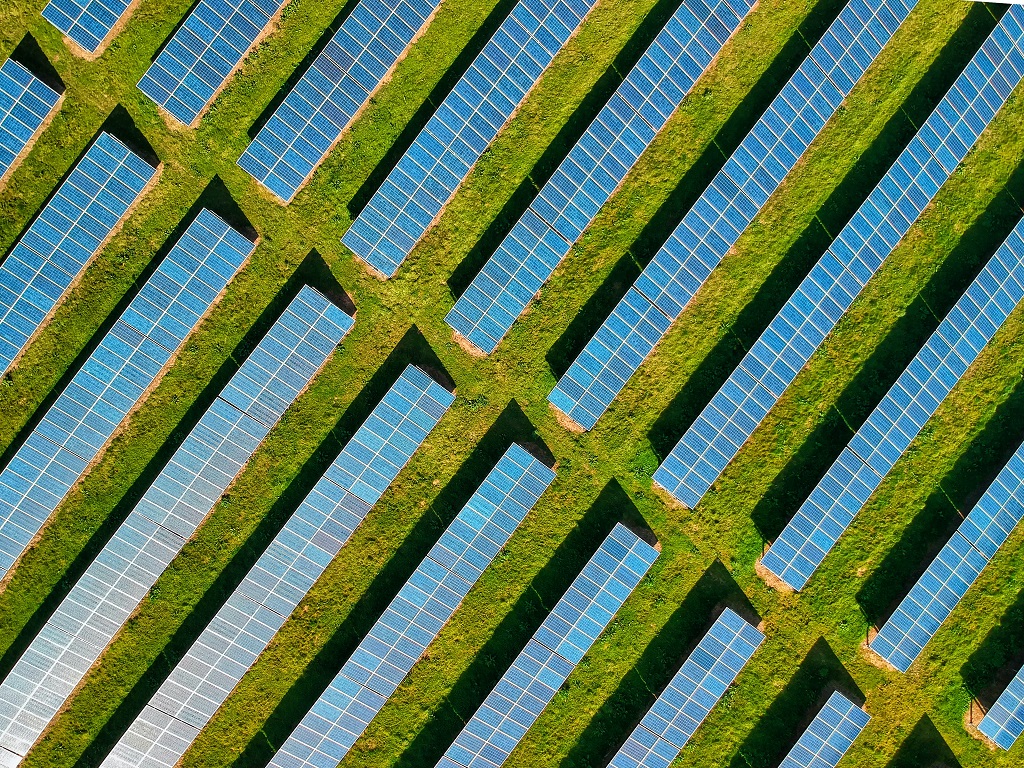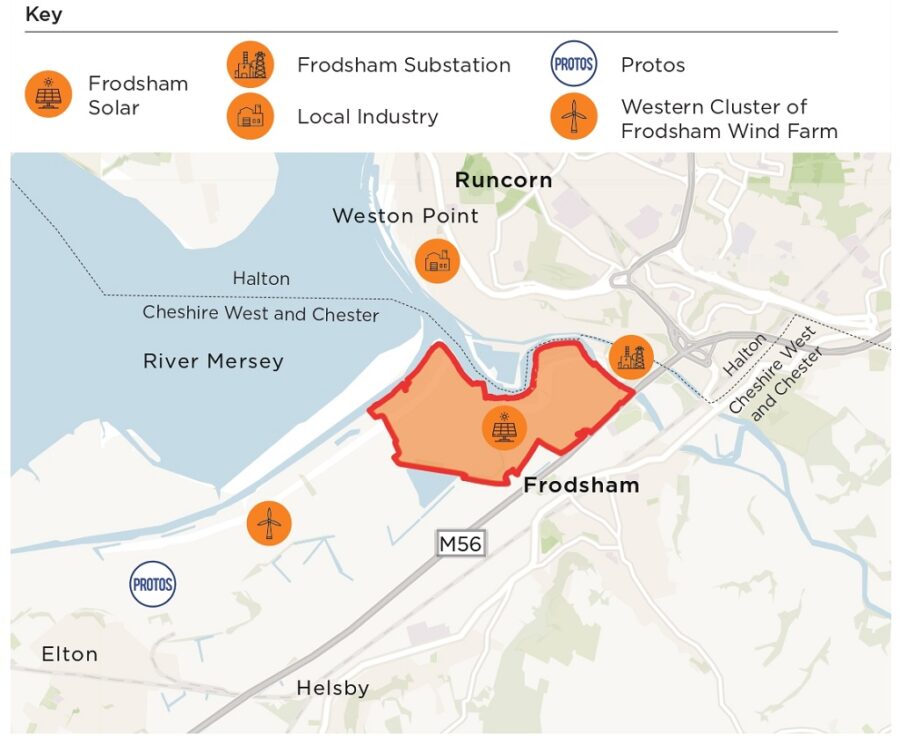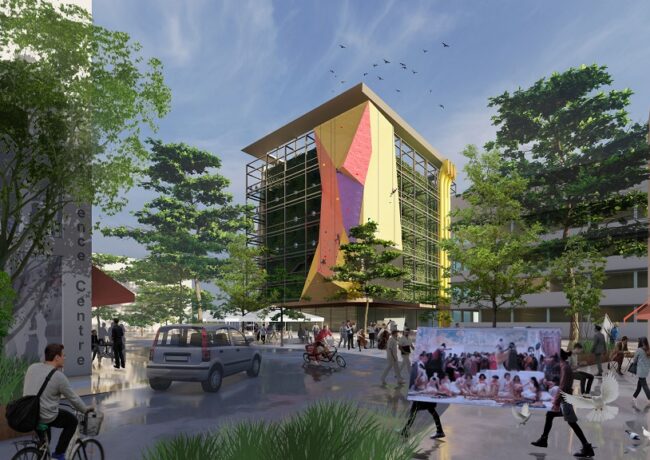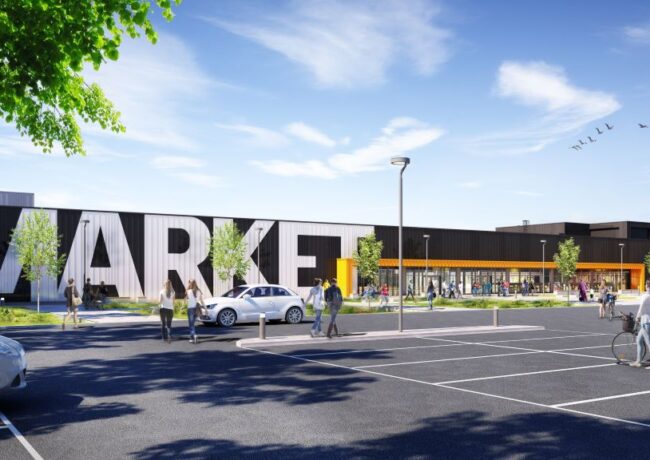Massive solar farm capable of powering 34,000 homes planned for Frodsham
A joint venture between Peel NRE and Cubico Sustainable Investments has started a consultation on its ambitions for a large-scale renewable energy facility on 780 acres in Cheshire.
Peel Cubico Renewables’ proposed solar farm would have a capacity of around 150 megawatts – enough to power more than 34,000 homes, according to the company.
Most of the energy would be pumped into the Frodsham Substation and then distributed to the wider Merseyside and Cheshire area by operator SP Energy Networks. Peel Cubico Renewables also said it was exploring private and direct connections.
The solar farm itself would take place on 780 acres located between the M56 and the River Weaver, just north of Frodsham. Of the 780 acres, 720 would be used for the solar panels, the remaining saved as green space. No development would take place on land designated as part of the Mersey Estuary wildlife site.
The scheme also includes installing solar farms under and around the turbines of the existing Frodsham Wind Farm on the site.
Current project timetables have the scheme in operation by 2028, contingent on its securing planning permission of course.
Due to its size, Frodsham Solar would be deemed a Nationally Significant Infrastructure Project. As such it would need to be signed off by the Planning Inspectorate and the secretary of state.
The consultation can be accessed at frodshamsolar.co.uk. It concludes on 13 July.
Peel Cubico Renewables’ plans come in a timely fashion. Global solar power investment is going to overtake spending on oil production for the first time this year, according to the International Energy Agency. Spending on solar power is forecasted to reach $382bn according to the Financial Times. Ten years ago, only $127bn was being spent on it.
“Energy security is one of the biggest issues in the UK right now, with many people understanding that the high cost of energy is linked to our reliance on imported gas,” said Annette Lardeur, development manager for Frodsham Solar.
“This project will support our national ambitions to reduce energy prices, cut emissions, and create homegrown clean energy,” she continued.
“Frodsham Solar will play a key part in this transition while creating a flow of clean electrons to homes and businesses in the region.”
This is the first England scheme for Peel Cubico Renewables. The JV is also developing the £30m Billown Solar Farm on the Isle of Man.






Or just build one of rolls Royce’s small nuclear reactors and that could power 4x as many homes on a foot print fraction of the size and probably cheaper and it would also provide 24/7 power 365 days per year – solar and wind just add cost and uncertainty to the grid
By Stuart wood
planed? or should it be planned??
By Drew
Hi Drew, thanks for spotting this. The headline has now been updated. Cheers, Dan
By Dan Whelan
There’s already several blots on the landscape due to the existing wind turbines, more would be absolutely awful. Where to i protest?
By Shelagh Sturgeon
Shouldn’t we be using this land to grow crops for the ever increasing population.
By Anon3
Fusion power will be our future and until that time a mix of generation shall be required.
This project is well located adjacent to the estuary where black non reflecting PV panels will blend well against the estuary water / sands and can still facilitate natural marsh land habitat around the panel rows.
The location permits the blending of a clean power generation opportunity in a semi industrial location while preserving the natural habitat of the marsh land.
The comments of Mr S Wood are indeed well placed and as part of the mix we do need the addition of the mini reactors developed by Rolls Royce. There are appropriate sites for these and hopefully construction will start soon.
As to the point of crops by Anon3 then this too is a valid point yet the salty marsh land and westerly wind exposed location is not suited for horticulture.
Successive governments and the energy sector are jointly culpable for years of neglect in energy generation and transmission infrastructure,planning and delivery. Now is the time to deliver change on a “better late than never” basis.
If long term planning and investment in the nuclear and renewable sector had been PROPERLY Planned and implemented with the scale that has been required, the UK could have been a true leader in carbon free power generation. A net positive domestic power generation model combined with seasonal domestic food production model promoted by food retailers could have lessened the inflationary impacts so may families feel today. Yes the Russia / Ukraine war has exacerbated energy cost rises yet it is convenient cover for past investment failings by the energy sector and successive governments.
Alas, we must catch up and drive a carbon free power revolution and this scheme plays an important part.
By Fusion Future
Stuart Wood , is correct about the RR reactors . As a typical example of the complete lack of joined up thinking in the UK we are about to start decommissioning Fiddlers Ferry which is positive due to the use of coal , however all of the Electrical infrastructure will now be wasted , or drop a RR off the shelf reactor at the site , hook up the cables and have immediate solution ? . The solar farms in the UK in comparison to much sunnier climates are not super efficient.
By Paul M - Woolton
@Stuart Wood
Or do both. The issue with wind is storage, not the wind itself. We now generate slightly over 50% of our energy on renewable sources. The British Isles are one of the windiest places on the globe and it would be a shame to waste this clean, infinite, local source of energy. The North Sea in particular is very windy. It’s deeply encouraging seeing growth in green engineering jobs in towns in the north east which are badly crying out for skilled quality employment.
But the Rolls Royce mini-reactors are also a great initiative – and easier and cheaper to set up than the traditional nuclear plants, which have become notoriously expensive projects to build eg Hinckley Point.
By SW
There’s enough shale gas under the Mersey to provide a whopping chunk of the entire country’s energy needs whilst we bring more solar, wind and nuclear to bear. But no, let’s import the stuff from Qatar in diesel-chomping LNG tankers.
By Sceptical
Solar at best will provide a very minted amount of total energy need through out the year so any cost needs account for the real world back up and supply – we don’t need an energy mix that adds unreliability. nuclear base load with next generation gas turbines for peak demand periods are the only two sources we need
By Stuart wood
@June 05, 2023 at 11:29 am
By Stuart wood
Sorry, I disagree. We should never have all our energy eggs in one basket. A diverse, locally produced mix of sources is what is required along with decently built and futureproofed new buildings and retrofit and enhancement of old stock.
By SW
I don’t see any integration between national energy policy and agricultural policy re farming sustainability and food supply so our basic needs for both food and energy are in competition with energy currently winning. The other issue is that solar panels last 25 years (to the early 2050s) when we will need to have a European wide recycling industry which currently consists of one small plant in Grenoble. Over 700 acres of redundant solar panels is a massive environmental issue waiting to happen and should be factored into lifetime costs and Planning conditions. Can’t see the Energy Secretary being that interested tbh.
By DC
At what cost to the individual ?
By Anonymous
Peel continuing its long-term strategy of developing all the Frodsham and Helsby marsh land between the Weaver and Stanlow. Incremental planning justifying new schemes on the back of those already granted. The entire greenfield area will be transformed from nature to industry.
By Paul Sillitoe